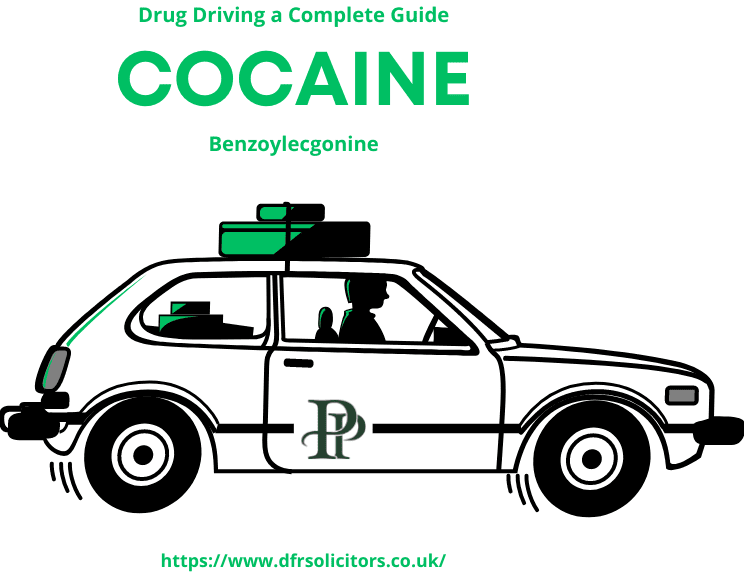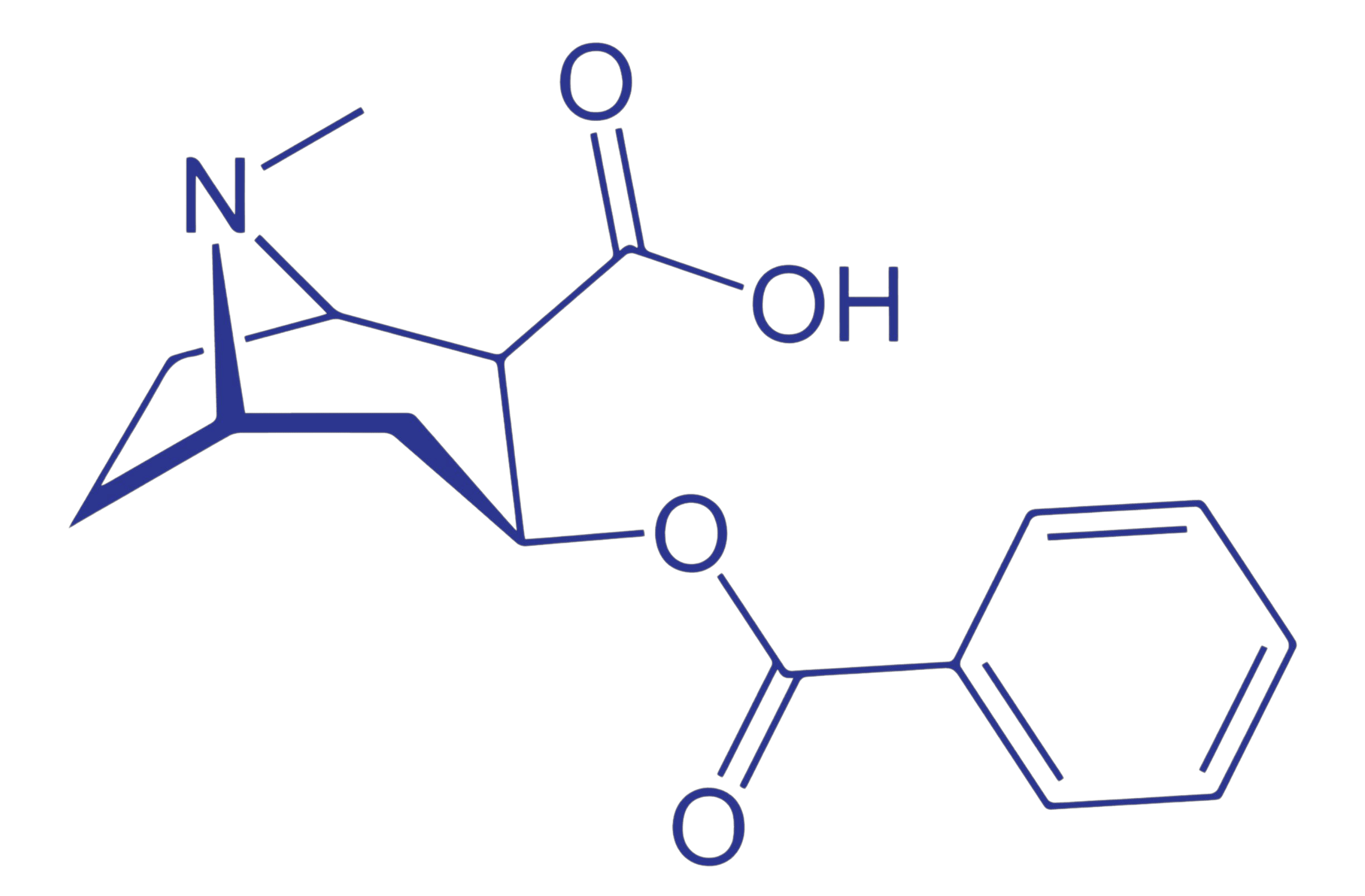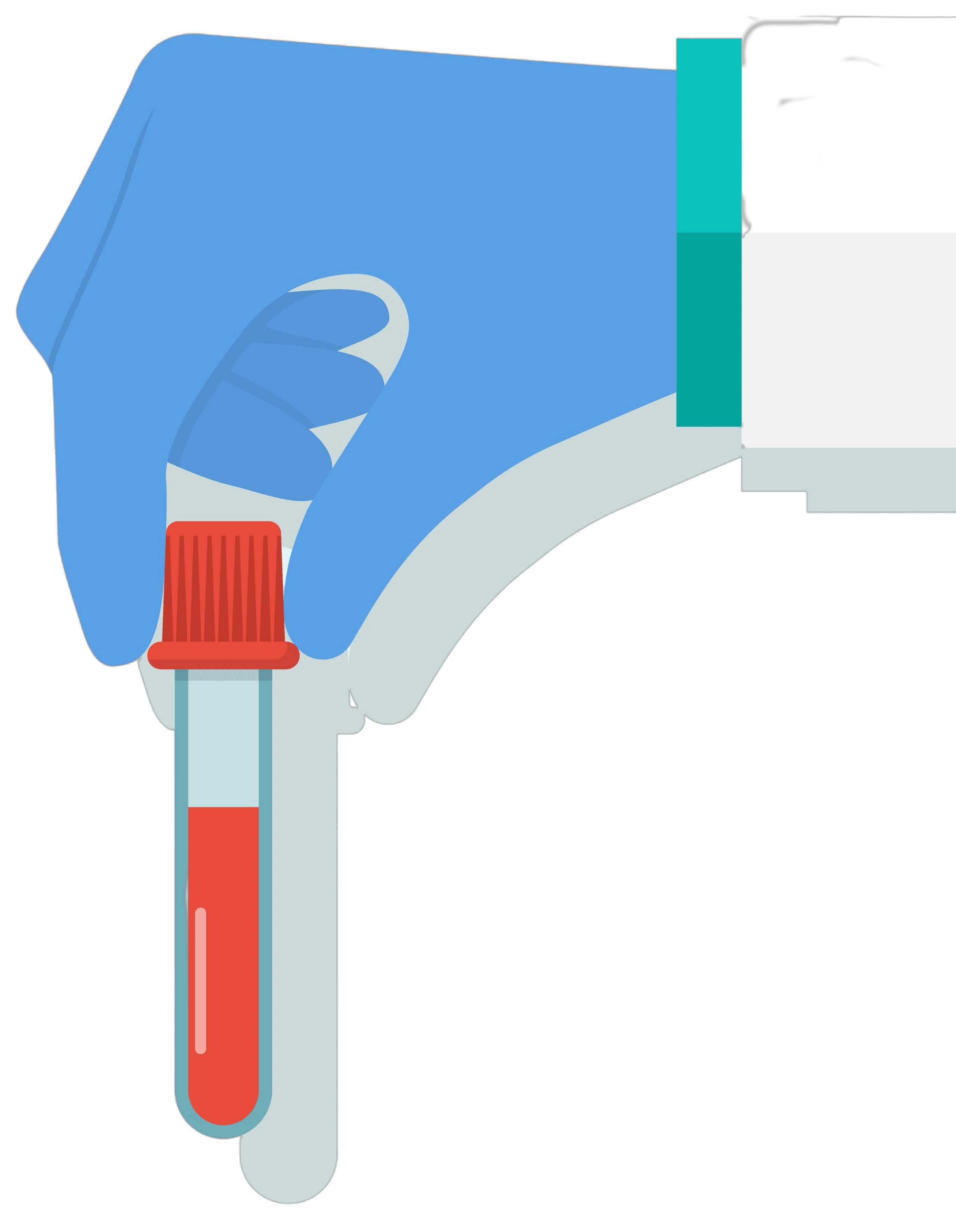
What is Benzoylecgonine?
To understand what benzoylecgonine is and how it is related to drug driving, we need to understand how the body breaks down and metabolises cocaine.
How is cocaine metabolized?
Cocaine is primarily broken down by the liver by enzymes it is broken down into various metabolites, the main ones being :
- benzoylecgonine
- ecgonine methyl ester
- Norcocaine
Eventually, with enough time these metabolites are eliminated from the body through the excretion process. The main metabolite cocaine is broken down into is benzoylecgonine and subsequently the most tested for in drug tests as 70-75% of a dose of cocaine is metabolized into benzoylecgonine.

The main metabolic pathways of cocaine are:
- Hydrolysis
- Oxidation
- Esterification
The main stage of metabolism we will be looking at will be hydrolysis where the ester bond in cocaine is broken down by enzymes producing benzoylecgonine.
As we have covered benzoylecgonine is the primary metabolite of cocaine but why is it important?
As benzoylecgonine has a longer elimination half-life than cocaine it was deemed more appropriate by ministers and experienced toxicologists that benzoylecgonine should be used instead as an indication of cocaine use.
Roadside drug swabs may be used by police to detect the use of cocaine then once an individual has been taken to the station benzoylecgonine will usually be tested for via a blood sample.
It has been found that even high levels of benzoylecgonine are found to act not in the same psychoactive manner as cocaine but rather benzoylecgonine has been found not to impair cognition and general motor skills.
It is extremely difficult for the police to convict impaired drivers through testing for cocaine in the driver's system as when the driver is taken to the station and provides a sample it may show no indication of cocaine use, therefore benzoylecgonine was declared a better indicator of usage due to the long elimination half-life.
How long does Benzoylecgonine stay in your system?
How long benzoylecgonine stays in an individual's system varies and is dependent on several factors such as:
- Frequency of cocaine use
- The individual's metabolism
- The drug test used
Importantly as police in the UK mainly test for blood benzoylecgonine can be detected in blood for a shorter period of time than other methods such as urine and hair and can be detected around 24-48 hours after use.
This still means if you have consumed cocaine in that time frame and are caught driving you may be charged with Drug Driving regardless of whether you were impaired at the time of driving, in most cases we see the driver is completely sober at the time of arrest but still tests positive due to the long half-life of benzoylecgonine.
What is the Legal Limit for benzoylecgonine?
The legal limit set for benzoylecgonine in the UK is 50 micrograms per litre of blood (50ug).
"Compared to the limit for alcohol, it is 1600 times smaller meaning even minuscule amounts of benzoylecgonine may tip an individual over the threshold even though as a metabolite benzoylecgonine is completely inactive in the individual's system. "
Defences for benzoylecgonine
Inaccurate laboratory results
Usually, we find that inaccurate lab results come under 3 main categories:
● Cross Contamination - Due to carelessness from the labs, lack of funding, and staff experience that police laboratories face we find that commonly labs may mix up labels and samples presenting samples containing positive traces with samples that do not.
● Sample Tampering - This usually occurs due to the same lab staff mistakes. samples have to be stored correctly in the appropriate environment and at the appropriate temperature. If samples are exposed to high temperature or excess humidity levels this could cause the further breakdown of benzoylecgonine causing a false positive.
● Equipment errors - Calibration errors are errors made in the calibration of equipment used to measure levels by laboratories. Calibration is the process by which lab equipment is tested to ensure accuracy. The UKAS (United Kingdom Accreditation Service) recommends that calibration is to be performed to high standards with low deviation.
Deviation measures the degree of variation in the measurements, and having a low deviation ensures that the results are accurate. If standard deviations in equipment are high, this could mean high levels of inconsistencies within results and false positives. Proving that the equipment wasn't properly calibrated would acquit the driver.
To carry out a defence on the basis of invalid lab results we would obtain a specialist report from one of the experienced toxicologists we work closely with in our Drug Driving cases. The contents of the report will review the results provided by the laboratory and determine any errors or inconsistencies found in the results. This report will then be used to prove an error by the laboratory and therefore acquit the driver of charges.
"During our time working in conjunction with senior toxicologists, we have found that mistakes made by the police are not an if but rather a when and due to the current state of the police force these mistakes are evergrowing ever since the economic crisis of 2009 police funding has decreased year by year resulting in poor police work and careless errors by staff."
Learn more about police funding here.
False positives due to the preservation of the Sample
As cocaine metabolizes benzoylecgonine is found. Over the course of time benzoylecgonine levels will increase after usage to prevent a sample from containing increased levels of benzoylecgonine due to the breakdown of cocaine, police are required to use blood vials coated with a preservative and anti-coagulant. In many cases, we have proved that at the time of the sample being taken BZE levels were lower than the limit and due to poor preservation more BZE was found present in the sample.

"One study published in the Journal of Analytical Toxicology in 2011 found that certain cold and flu medications, such as Contac Cold+Flu Maximum Strength and Vicks NyQuil, contained detectable levels of benzoylecgonine. Another study conducted by the same journal in 2015 found that benzoylecgonine was present and detectable in numerous herbal and dietary supplements."
Learn more here.
Another study conducted by the same journal in 2015 found that benzoylecgonine was present and detectable in numerous herbal and dietary supplements.
Find below some commonly used medications and items containing benzoylecgonine:
● Contac Cold+Flu Maximum Strength
● Vicks NyQuil
● Excedrin
● Herbal supplements containing green tea
● Herbal supplements containing St. John's wort
False positives from drinking tap water
Various studies have proven that benzoylecgonine is found in tap water one study by Banta-Green et al. (2009) analyzed the presence of cocaine and its metabolites, including benzoylecgonine, in the raw wastewater of two cities in London and Manchester.
The study showed that benzoylecgonine was one of the most common metabolites in the water. Although the levels of BZE were found to be low due to the stringent no-tolerance policy for Drug Driving in the UK it is possible to be charged for something as simple as drinking tap water containing benzoylecgonine. Learn more here.
Defending a Drug Driving Charge (Benzoylecgonine )
Above, we have written a brief guide to your options when dealing with a case relating to benzoylecgonine and driving. If you have been charged with Drug driving and would like additional information or advice please don't hesitate to call us at 01484 599888
As a specialist drug driving firm, we have built an infamous reputation for helping the everyday man or woman keep their license. From our decades of experience and firsthand experience dealing with a plethora of Drug Driving cases, we are more than well-equipped to guide you through the perplexities of your case.
How long does cocaine stay in your hair?
Cocaine and metabolites of cocaine can be found in hair much longer than other ways of testing. Hair tests can detect cocaine use up to 90 days after usage depending on the length of the hair taken and frequency of use. The reason why this occurs is that as cocaine is metabolized, it becomes incorporated into the hair as it grows and can be detected long after it has been expelled from the body.
How long does cocaine stay in saliva?
Cocaine can be found in saliva from 24 hours after use to 48 hours, again entirely dependent on the individual. Levels detected can also vary based on what test is used and the specific method of analysis carried out.
How long does cocaine stay in urine?
Again, as with all other testing methods, it is dependent on multiple factors as mentioned above but as a general statement, cocaine can be detected in urine for up to 2-4 days after the last use. However, in more frequent users, the number could change up to 12 days.
How long does cocaine stay in your blood?
Cocaine generally stays in the blood for up to 24 hours. However, again, this is dependent on various factors. Also, please note that although cocaine can only be detected for a short period of time, benzoylecgonine can be detected for prolonged periods after use.
"I was charged with Drink Driving, and the case looked hopeless, Abdul reassured me, and the CPS offered no Evidence. Abdul is certainly an Expert in Drink Driving and his handling of the case was outstanding"
"I was charged with drink driving and my case looked hopeless. There was witness evidence and forensic evidence. From my first meeting with Abdul he reassured me that we could win the case. Abdul was fantastic and the end result is that I am a happy man as I have kept my driving licence and my job."
"I would like to thank Abdul for his support and professionalism through a difficult phase in our lives.The outcome was the best of what we could have hoped for and would recommend your service to others if needed."
"After an extremely stressful 4 months I am delighted with the outcome . Abdul represented me through-out and was always there to support me when the panic took over and delivered what was discussed at our very first meeting. I cannot thank Abdul enough for all his hard work and helping me keep my driving licence. , I wouldn’t hesitate recommending them to friends and family. Many Thanks."
"I am grateful to Abdul and team. I have avoided conviction for failure to provide despite what seemed to be overwhelming case against me. I am absolutely delighted as my driving licence was everything and I stood on the verge of losing everything. Keep up the good work ."
